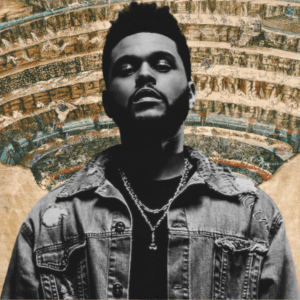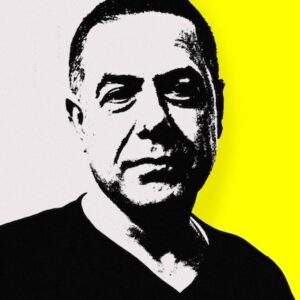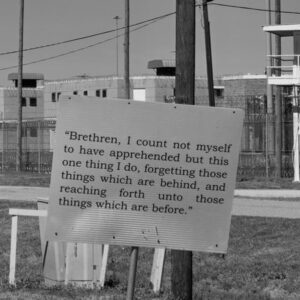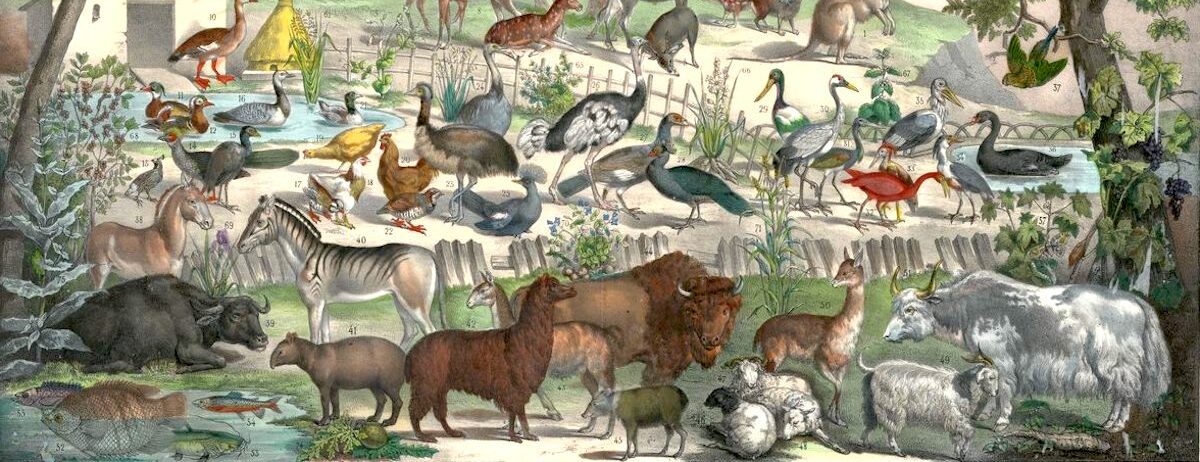
All Living Creatures: Do Animals Deserve Political Rights and Representation?
Brandon Keim Considers the Human Case for Giving a Voice to the Voiceless
Several years ago I traveled to Toronto, Ontario, for a conservation biology conference. The city sits on the edge of Lake Ontario, and one evening I wandered down to Leslie Street Spit, a three-mile-long peninsula formed from construction debris dumped there during the last century. Upon that rubble grew an unlikely urban wilderness, which is now home to North America’s largest colony of double-crested cormorants—large, fish-eating waterbirds with black plumage and bright blue eyes.
By historical standards Leslie Street Spit’s 30,000 birds were not an exceptionally large colony, but they were still awesome to behold. Even from the distance I kept so as to avoid disturbing them, their physical presence was palpable. It recalled wildlife documentaries on wildebeest migration and emperor penguins, or the sci-fi film trope of a spaceship descending into an extraterrestrial city, vast and teeming, at once alien but recognizable. Shorelines were black with their bodies; each tree might have several dozen nests, built from large sticks in a ramshackle fashion that belied their ability to withstand winds blustering off the lake. On the ground their nests were separated by only a neck’s length. The landscape pulsed with the small movements of mates preening and tending to their young. Their low grunting voices made the air thrum.
Back in Maine, I had grown up disliking cormorants, regarding them as gluttonous competitors for the fish I wanted to catch. Eventually I stopped fishing, but well before that, I decided that their claim trumped mine. How could I begrudge them the fish they relied upon to survive but I caught only for fun? Ever since then I’ve felt an extra affection for them, a bit like when a former nemesis becomes a friend. I’ve also come to see my original antipathy as unwittingly reflecting a millennia-long vilification of the birds.
What would it mean to include them—not just as individuals with rights, but with representation—in our own societies?
The Bible describes the Lord, while instructing Aaron and Moses on what to eat, calling cormorants detestable. In John Milton’s Paradise Lost, Satan himself sits upon the Tree of Life disguised as a cormorant. Not every society felt this way; in China and Japan, other cormorant species have long been trained to catch fish, and among some Indigenous cultures in central North America, cormorants were one of the animals to whom people expressed a special kinship. Just as there was a Bear clan, a Sturgeon clan, and a Turtle clan, so was there a Cormorant clan. Settler society felt no such affiliation, though. They saw cormorants as destroying fish. In a culture where blackness “was an obvious and potent sign of difference and otherness,” as the waterbird biologist Linda Wires wrote, the birds were regarded with “a special kind of hatred.” Well into the twentieth century they were commonly called “n—r goose”—you know the word—and even if people who slaughtered cormorants were not necessarily motivated by racial enmity, the term speaks to the contempt many people reserved for them, and the low value placed on their lives.
Persecution of the birds reached its extreme in the late nineteenth and early twentieth centuries. Cormorants abandoned the breeding colonies—the ancestral communities—that were such easy targets for men with guns, who killed them by the boatload. Once common, they were reduced to a rarity; when in the 1920s a few cormorants were seen nesting in the Great Lakes, scientists disputed whether they had ever lived there before. The birds had been so thoroughly exterminated as to vanish from regional memory. There followed a brief rebound that lasted until the early 1940s, when reproductive disruption caused by the pesticide DDT decimated their populations again. Even where they persisted, they were a shadow of themselves. Far to the west, on San Martin Island off the coast of Baja California, where more than half a million cormorants nested at the turn of the twentieth century, just 5,000 remained by the late 1960s. A mere 125 pairs were estimated to survive in the Great Lakes. In 1972 the United States added cormorants to the species protected under the Migratory Bird Treaty Act and, with DDT off the market, their numbers started to rise again.
At sunset, as breezes stilled and Lake Ontario’s expanse mirrored a long summer dusk, a sinuous black line appeared on the horizon. As it approached it resolved into approximately 70 cormorants who flew close to the water in a loose V-formation and veered upward at its edge, passing overhead in a rush of muscular, muffled wingbeats. No sooner had they faded when another squadron appeared, then another, and another. This was as moving a sight as the colony itself. These birds were returning home after a day’s work—perhaps in the company of others from their neighborhood, I thought, with the family, friends, and acquaintances with whom they shared their lives. The procession had not abated when I departed a half-hour later.
What stories might these cormorants tell? Fishing stories, perhaps: they would know the waters for miles around better than any human angler. They would know where to find alewives—a staple of their diets—and also round gobies, rainbow smelt, and pumpkinseed sunfish, at different times of day and in different seasons. Could they also have some culturally-transmitted memory of those long, dark years when humans chased them from their homes and eggs deformed by pollution collapsed beneath the weight of incubating mothers? An unknowable and perhaps fanciful speculation, but cormorants can live for a quarter century, and only a few generations separated this metropolis from its founders. According to contemporaneous accounts there were six nests there in 1990, at the very beginning. Two birds per nest; in all, 12 survivors. What had it meant to them to find safety on this strange rubble outcropping, where despite the presence of so many humans they were actually left alone?
“Whose stories come to matter in the emergence of a place?” asked environmental philosopher Thom van Dooren and the late Deborah Bird Rose, an ethnographer, in an essay inviting readers to imagine how animals “understand and render meaningful the places they inhabit.” It is good to conceive these stories, even if they cannot be investigated empirically; a beneficial form of anthropomorphism. How special the colony at Leslie Street Spit must have been to the cormorants who remembered a time before it. Perhaps they looked upon its society with something akin to pride. And what would it mean to include them—not just as individuals with rights, but with representation—in our own societies?
*
Not long before going to Toronto I attended a gathering of scholars and activists called Minding Animals. For someone with a background in science journalism, where the humanities merely supplemented stories about scientific discoveries and the researchers who made them, it was thrilling. There was an intellectual exuberance to the “animal turn,” as this blossoming interest in animals is known, and a new term kept coming up at the conference: a “political turn,” away from simply examining the ethics of our relations with animals and toward political organizing and including animals in institutional decision-making. Toward the idea, to put an American spin on things, that We the People ought to include animals as well.
That it doesn’t can seem self-evident. How could politics not be a strictly human endeavor? Dogs might be like family, but they can’t vote or write letters to the editor. Yet this attitude, argues the Dutch philosopher Eva Meijer, is rooted in a philosophical tradition of human exceptionalism. Aristotle defined humans as the only political animal, singularly capable of making moral decisions and articulating the reasons; subsequently animals were seen as voiceless, literally incapable of participating in the linguistic exchange of ideas at the heart of human politics.
In her doctoral thesis, titled Interspecies Democracies, Meijer excoriated this notion. “Other animals have languages and express themselves in many ways,” she wrote, “but they cannot make themselves heard in the dominant political discourse because they do not speak in the language of power.” She drew upon the scientific insights we explored earlier, about how a great many animals communicate in ways comparable to what we call language and live in complex communities where they negotiate—sometimes democratically—collective decisions. In light of this, argues Meijer, they should not only be seen as intelligent but recognized as a political group.
The Canadian philosophers Will Kymlicka and Sue Donaldson explore what this could mean in a book called Zoopolis: A Political Theory of Animal Rights, which was published in 2011 and, among people interested in animals and philosophy, was perhaps the decade’s most influential work. At its heart is the proposition that—for animals as well as humans—moral status isn’t enough. It’s also important to be considered a member of society.
Prior to Zoopolis, Kymlicka had spent two decades theorizing about human social membership—specifically, about what it means to belong to multiple groups at once, especially in liberal, democratic societies. His Multicultural Citizenship: A Liberal Theory of Minority Rights and Multicultural Odysseys: Navigating the New International Politics of Diversity were not exactly airport-bookstore fare, but they were widely lauded within the world of political theory. It was Donaldson, to whom he is married, who introduced him to animal ethics when in the late 1980s a friend convinced her to go vegetarian. She in turn convinced Kymlicka. But it wasn’t until the late 2000s that, at Donaldson’s urging, the two considered the connection between animals and his ideas about human rights. Out of that came Zoopolis.
“Many people acknowledge that animals have an intrinsic moral status,” Kymlicka explained at a Minding Animals panel, “Justice and the Political Status of Animals,” so crowded that people ended up sitting on the floor. “But we’ve made much less progress on the idea that animals might rightly be seen as members of society with membership rights.”
Membership rights, he explained, are those that come from being part of a shared society: my rights as an American citizen, for example, and then the rights that come with being a resident of the state of Maine, rather than the universal rights owed to me as a human being. It’s the former sorts that figure most prominently in our lives, argues Kymlicka. Access to health care, the social safety net, necessary goods and services, political representation: all reside in group memberships rather than simply being human. And who qualifies for membership? Who gets to be part of what ancient Greeks called the demos: the recognized participants of what’s now known as democratic society? In sixth century Athens, it was unenslaved adult men. Nowadays, at least in principle, it’s every human being, but there’s a tension at the heart of this expansion.
Some disability theorists critique how norms of citizenship implicitly presuppose a certain type of cognitive and linguistic sophistication. (Norman Rockwell’s famous “Freedom of Speech” painting, of a man standing up and testifying at a town hall, always comes to mind when I think of this.) Children and people with cognitive disabilities are effectively excluded. This is unfair, say the theorists; all members of society should be considered citizens, and if it’s presently difficult for them to participate in shaping their society and its laws, then we should figure out how to include them. This argument’s implications for animals are clear.
Humans and nature should not be understood as mutually exclusive, intrinsically opposed categories.
Many of them are unquestionably members of our societies: most obviously domestic animals, whose very label speaks to their place in homes and workplaces, but also all those free-living beings whose lives are affected by our decisions and whose activities may affect our own. Animals, argue Kymlicka and Donaldson, deserve citizenship too. Of relevance is the way human citizenship is not a one-size-fits-all affair: for example, rights and privileges can vary depending on whether someone is native-born or an immigrant—and, within that, whether they’re naturalized, refugees, or undocumented. Members of many nations and communities often share the same space: a busy street might contain a mix of natural and naturalized citizens, along with visitors from other countries and Indigenous people who belong to multiple nations at once. In this rich patchwork they find lessons for the status of animals.
In Kymlicka and Donaldson’s model, domestic creatures—so intimately shaped by our wants and needs, and for whom we’re uniquely responsible—would receive full co-citizenship. Their interests would merit special consideration; their situation would be akin to that of young children or cognitively different people who might not be capable of conventional political participation but are represented by trusted people obligated to act on their behalf. Wild animals living in wilderness areas, who actively avoid humans and our settlements, would be seen as citizens of other nations. The wilderness—a concept critiqued by environmental historians as socially constructed and problematic in its elision of humans, but still a useful reference—would be their domain. Relations between us and wild communities would be governed according to established norms of cooperation, conflict mediation, and limited intervention. Once again humans would represent animals’ interests but be guided by the principle that those wild creatures and their homes should be free from exploitation and invasion. Intervention might occur, but only for their own benefit, as with humanitarian aid.
Of course, members of wild communities often enter our own. Bird migration is the most obvious example, as with the solitary sandpipers who stopped to replenish themselves at the stormwater pond in Bethesda before flying on to Canada’s boreal forest vastness. Kymlicka and Donaldson liken them to nomads, their sovereignty respected when crossing international boundaries, required only to respect the laws of their hosts. Once again humans would represent them and include their interests in institutional and political decision-making. And migrants are not the only free-living animals we encounter in our environs. There are those creatures, like pileated woodpeckers or coyotes, who survive in wilder pockets of settled areas; all those animals who thrive in urbanized ecosystems, such as white-tailed deer, house sparrows, and pigeons; and also the so-called ferals, the escapees and descendants of animals bred by humans.
These billions of liminal creatures are especially interesting to Kymlicka and Donaldson. They’re “affected every time we chop down a tree, divert a waterway, build a road or housing development, or erect a tower,” they write in Zoopolis, yet “from a legal and moral perspective, they are amongst the least recognized or protected animals.” Conservationists and animal advocates alike often overlook them, perhaps in part because they don’t fit into a tidy conception of cities as human spaces and wild creatures as not truly belonging where we reside. In Kymlicka and Donaldson’s model, they are not full citizens, which entails a level of human interaction they’re not seeking, nor members of sovereign nations, a designation that fails to reflect how entangled they are with our own lives. Instead, these beings—the starlings and cottontail rabbits of the stormwater pond, the cormorants on Leslie Street Spit—would be considered denizens, not unlike immigrants who are not citizens but are still accepted as members of society. They don’t qualify for citizenship’s full benefits but merit consideration and some degree of representation in society’s deliberations.
All of this might sound impractically radical as well as academic—something for ivory-tower theorists oblivious to the profound disagreements that exist about representation for fellow humans, much less animals. Yet it’s still vital to grapple with what it means to see animals as fellow society members.
It’s now widely accepted in environmental and conservation circles that humans and nature should not be understood as mutually exclusive, intrinsically opposed categories, with human presence inevitably blighting a nature that flourishes only in our absence. Contemporary nature writing is animated by a spirit of imagining new relationships of mutual thriving—yet animals remain largely invisible in politics and governance, even theoretically. When in her best-selling Braiding Sweetgrass Robin Wall Kimmerer writes of “the democracy of species,” the possibilities of that beautiful phrase remain unexplored. In this way the human-nature divide remains intact.
Though it’s presently difficult to envision for some domestic animals—not pets, perhaps, but certainly those used for food, labor, and research, which are industries that animal citizenship would challenge—it wouldn’t be hard to include wild animals in the way Kymlicka and Donaldson suggest. Killing them for sport or convenience is unjust; so are the harms of pollution, vehicle collisions, and climate change. Respecting and representing their interests isn’t so complicated, and I suspect many nature- and animal-loving people would like to see it. The practice just needs to catch up with the theory—and, far from being radical, these ideals are already, at least in some places, being realized.
*
In the mid-2000s some Toronto residents wanted the cormorants gone. They blamed them for killing the trees where they roosted with their acidic, nutrient-rich guano. This was unquestionably true, albeit at a scale dwarfed by the construction of new subdivisions and shopping centers in the region. But people were particularly fond of Leslie Street Spit, which is home to the popular Tommy Thompson Park and its 11 miles of urban wilderness trails, and it was far easier to kill cormorants than challenge property developers.
Cormorants, after all, don’t typically inspire the sympathy that blue herons or bald eagles do; they’re not so beautiful or majestic that it’s easy to care for them without really knowing them. To get a better sense of who they are I asked Gail Fraser, a biologist at York University who has spent years studying the colony, about their daily lives.
What stands out to her, she said, is their devotion as parents. Like many bird species their babies are born naked and undeveloped, requiring constant attention, but this dedication lasts even longer than she expected. At the end of summer it’s not uncommon to see parents remaining at their nests, waiting for visits from otherwise-independent chicks. “The adult is waiting there. And waiting there and waiting there,” Fraser said. “And then the chick flies in,” often clumsily, banging into branches, “because they’re still learning to navigate and fly. But they arrive, and they immediately start begging, and they hardly have to beg at all.” Mom or dad is ready with a meal.
Yet even Fraser’s knowledge is not intimate. I asked her whether cormorants used the same nest each year: she thinks so, although she’s not sure. To reduce disturbance, she’s put the colored leg bands that biologists use for identification on only a few birds. That seems emblematic of how rarely we know these birds as individuals, much less at a personal level.
I found one person who knew a cormorant well, though: an ecologist named James Ludwig, the cover of whose book, The Dismal State of the Great Lakes, is graced by a cormorant he found in the summer of 1988 while researching the long-term effects of pollutants on waterbirds. He was on Naubinway Island, at the northern tip of Lake Michigan, finishing yet another depressing field season of cataloging birth defects and reproductive disorders. Within the eggs he sampled, one-third contained deformed embryos. When he found a fledgling who clearly would not survive, he would euthanize the bird for further analysis.
He had already killed 28 cormorant and Caspian tern chicks—“death had been in my hand, and by my hand, daily for two months,” he later recalled—when he found a baby cormorant whose upper bill curled into a near-complete circle, like a cartoon boar’s tusk. Ludwig had never seen such a spectacularly disfigured bird. “Something about her really struck a chord,” he told me. He knew it was his duty to kill her, and chided himself for being so unscientifically soft-hearted, but he looked into her eyes and decided to keep her alive instead. He named her Cosmos.
At the time he thought the gap between their species precluded any sort of relationship, and theirs began—appropriately for a baby—with incessant hunger, demands for attention, and prodigious amounts of poop. Cosmos grew fast, and soon Ludwig started taking her along when he testified to legislatures or spoke in public about pollution in the Great Lakes. One evening, as they drove home from a meeting in Chicago where his request for research funds had been denied, Cosmos hopped onto a despondent Ludwig’s shoulder and started to nibble his ear. It wasn’t so different from what a pet dog or cat does when sensing their human’s distress, or from the way cormorants preen their partners. Instead of feathers, Cosmos tended to Ludwig’s sideburns.
That became a drive-time ritual, and the memory of their long trips across the upper Midwest remains precious to him. Over the course of nine months Cosmos made, by Ludwig’s count, 27 television appearances, including a visit by a news team from Japan, where she graced the cover of a middle-school textbook; joined him in a dozen classrooms and 29 meetings of local environmental groups; and accompanied him to the state buildings of Michigan and Wisconsin, and also to the US House of Representatives. She posed for photographs and seemed to delight in attention, as befitted such a social species. Whenever Ludwig was especially anxious or unhappy, she would invariably preen his hair and nibble behind his earlobes. Cosmos herself liked to have her feet stroked and her neck rubbed. Sometimes she fell asleep on his shoulder.
At home she would join Ludwig on the backyard bench where he liked to read and turn the pages of scientific journals with her beak. She could be possessive, too, becoming upset if someone else tried to sit with them. “I think she looked at me as her parent,” he said. Often she went for a dip in his pool; at those moments, said Ludwig, she was transformed. Never mind that she was a sickly bird upon whom the legacy of dioxin dumping was written not only in genes that regulated beak development, but in a suppressed immune system that left her chronically vulnerable to infections that Ludwig and his wife, Kay, could barely control with repeated cycles of antibiotics. In the water she became a glistening bullet, streaking from one end to the other faster than Ludwig could run.
The practice just needs to catch up with the theory—and, far from being radical, these ideals are already, at least in some places, being realized.
But that chemical legacy would not be denied. When the next summer arrived and Ludwig prepared for another field season, Cosmos was recuperating from a chest infection and foot sores. Soon after he left she developed a recurring eye infection. By midsummer she was weaker than ever. During a break in his work Ludwig returned and she seemed to regain some of her strength, but her health declined again when he returned to the field. She stopped eating altogether. One early August afternoon Kay found Cosmos beside the pool, in her favorite sunning spot, her lifeless bill grazing the water’s surface.
Ludwig has an Upper-Midwestern voice, amiable but also reserved, and grew up well before it was widely acceptable for men to expose their emotional vulnerability. Still, when he tells me this, I can hear the tremor in his voice. “I felt the same way that I felt when I lost my 15-and-a-half year-old border terrier,” he said. “Like an essential part of my life was gone. And it took a long time for me to really deal with it.”
Because Ludwig was away when Cosmos died, Kay put her body in a freezer, and when he returned he left her there. Rather than confront his own feelings he sunk into work; he tried to convince himself that Cosmos was just a bird.
It took him two years to decide what to do with his friend. He and Kay finally took her body to High Island, to a promontory they consider to be the most beautiful spot in Lake Michigan. There, as the region’s Stone Age inhabitants once did, they faced her body to the east to catch the rising sun.
Below her was a colony of gulls and terns, and as Cosmos never had a nest of her own, they built her a nest of dune grasses. In place of eggs, they put stones in it. From nearby wildflowers he gathered roots and seeds: Cosmos had died before her own colors came in, but these would bring colors each spring. Over her body they read a classic passage from the naturalist Henry Beston’s The Outermost House:
We need another and a wiser and perhaps a more mystical concept of animals….We patronize them for their incompleteness, for their tragic fate for having taken form so far below ourselves. And therein do we err. For the animal shall not be measured by man. In a world older and more complete than ours, they move finished and complete, gifted with the extension of the senses we have lost or never attained, living by voices we shall never hear. They are not brethren, they are not underlings: they are other nations, caught with ourselves in the net of life and time, fellow prisoners of the splendour and travail of the earth.
Cosmos was special—and yet, in a sense, no more so than any other cormorant. Circumstances brought her and Ludwig together, but had Cosmos been born healthy and never caught his eye, she would have been just as valuable a being. And even though I can’t tell the cormorants of Leslie Street Spit apart from one another, and the biologists who study them struggle to identify individuals, much less know their personal histories, each of those birds—those denizens, in the language of Kymlicka and Donaldson—is special, too.
Bear that in mind when considering the calls for their removal—which is to say, their killing. As these intensified, up stepped the Animal Alliance of Canada, an animal protection group cofounded in 1990 by Liz White, a former nurse who had previously worked for the Humane Society. In 2005 she also helped found a political party now known as the Animal Protection Party of Canada. White and company didn’t actually expect to win elections, or even come close, but by running candidates they might help shape public conversation. They were “there to defend the rights of animals and make people understand that the planet is a finite entity, and that we’re all in it together,” White told me when I visited their headquarters, which doubles as a shelter for rescued cats and dogs. Adorning the walls were photos of animals they’d helped: seals, cormorants, cows and sheep, a turtle kept in a bucket for 20 years for whom they’d found a sanctuary home.
White, who still exudes a nurse’s brisk competency, offered me a slice of vegan cake and explained how the Toronto and Region Conservation Authority had been ready to start shooting cormorants at Leslie Street Spit. This was predictable; even in an age of relative protection, about 40,000 cormorants were being killed with government permission every year in the United States, and some 32,000 had been killed in the Great Lakes region of Ontario. In the United States, this was presented as necessary to protect fisheries—a justification that, nearly a decade later, would fall apart when challenged in court—while in Ontario cormorants were killed mostly in the name of protecting vegetation around their roosts.
__________________________________
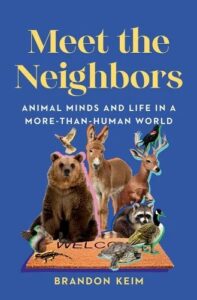
Adapted from Meet the Neighbors: Animal Minds and Life in a More-than-Human World by Brandon Keim. Copyright © 2024 by Brandon Keim. Used with permission of the publisher, W.W. Norton & Company, Inc. All rights reserved.
Brandon Keim
Brandon Keim is an independent journalist specializing in animals, nature, and science. His work appears regularly in the New York Times, Atlantic, Nautilus, National Geographic, and elsewhere. He lives in Bangor, Maine.










